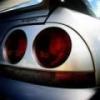Twin Turbo Into Single
Announcements
-
Similar Content
-
Latest Posts
-
FYI: Racebox RE7R Custom Tunes Released! https://goracebox.com/.../2017-infiniti-q50-q60-re7r-tcm... FOR GEN 2 (21+) VEHICLES, PLEASE SEE NOTE AT BOTTOM See more But whomever tuned your car is the tuner you should go back to, AMS, Sonictune or BT Tune....
-
By Dose Pipe Sutututu · Posted
there's a name I haven't heard in a while! Some of those old photos on SAU and NS were amazing -
By Murray_Calavera · Posted
Sounds good. I'm sure you'll be happy with the injectors, and it's nice having a little room to grow.







Recommended Posts
Create an account or sign in to comment
You need to be a member in order to leave a comment
Create an account
Sign up for a new account in our community. It's easy!
Register a new accountSign in
Already have an account? Sign in here.
Sign In Now